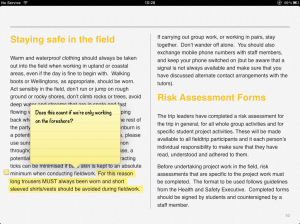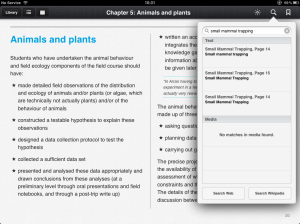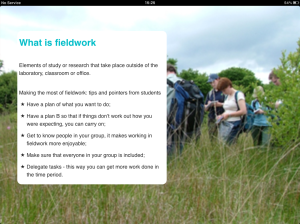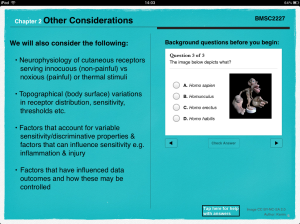The end of the academic year (and more importantly the fact that we’ve recently submitted our final project report to the HEA) seems like a good time to consider the successes of the project, as reflected in the project summary:
This HEA funded collaborative project between the Universities of Leeds and Hull has been highly successful, producing a number of innovative eBook publications in a range of disciplines which have been evaluated by student audiences and disseminated publicly as Open Educational Resources. eBooks have been produced for biomedical sciences practical classes, medical students, biological sciences professional development courses, Japanese studies assessment and biology fieldwork courses. eBooks have been produced in iBooks Author and Articulate Storyline and the advantages and limitations of both tools have been evaluated. Students have been involved as co-producers and evaluators of content. Findings from evaluation studies have shown eBooks to be highly appreciated by students, for the richness of content, interactivity, flexibility and look and feel. The project has resulted in a number of outputs, including conference presentations, case studies and reports.
We’ve spoken at a range of events including:
Higher Education Academy Annual Conference 2013: Powerful Partnerships. Students as partners to produce digital learning materials and evaluate mobile learning approaches.
MELSIG (Media Enhanced Learning Special Interest Group) event: Smart Devices for Learning. Designing and evaluating eBook resources. Designing and evaluating eBook resources
Leeds University Student Education Conference 2013 Workshop. Assessing the impact of multimedia, interactive eBooks on student learning and engagement (upcoming)
School of Modern Languages and Culture Student Education Forum 2013. Using eBooks for assessment
Engaging students as Partners in STEM Disciplines HEA Workshop. Students as partners to produce digital learning materials and evaluate mobile learning approaches
We’ve submitted a range of papers and case studies including to the ALT online newsletter, our internal SDDU case book and to an international journal on physiology education.
The eBooks have been made available as open educational resources.
All resources produced as part of this project have been used in modules and programmes at the Universities of Leeds and Hull and have resulted in improvements in the student experience. The outputs and dissemination activities have been widely praised and picked up by a number of colleagues at UK universities (evidenced by feedback at events and comments on social media channels). The interest in eBook solutions across the institution has increased as a result of this project, and the Staff and Departmental Development Unit are now running focussed workshops on creating eBooks for academic staff. Also, as a result of this project the University has established an Apple Bookstore for the external publication of eBooks, and these resources will be available on that site shortly. The wider community has benefitted from this project in the following ways: (1) Open Educational resources available via Jorum, Apple Bookstore; (2) Guide about producing and publishing eBooks in ALT newsletter; (3) educational research evidence of the effectiveness of eBooks for student learning in Higher Education.










